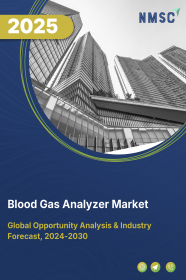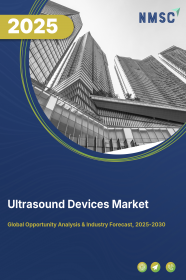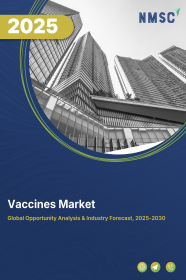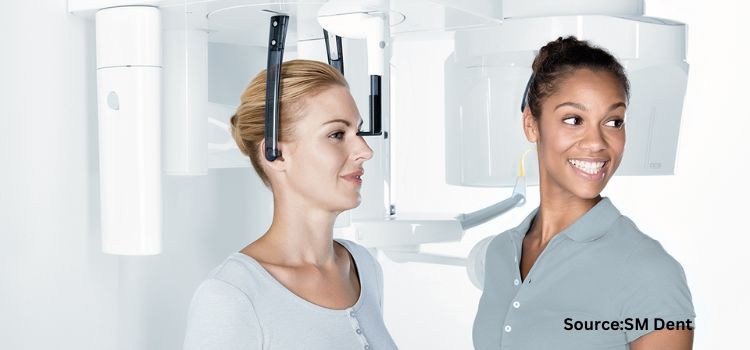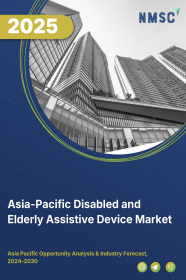
Asia-Pacific Disabled and Elderly Assistive Device Market by Type (Mobility Impairments, Hearing Impairments, Visual Impairments, Cognitive Impairments, and Self-Care), and by End User (Hospitals, Elderly Nursing Homes, Home Care, and Other End User) – Opportunity Analysis and Industry Forecast, 2024–2030
Industry: Healthcare | Publish Date: 17-Feb-2025 | No of Pages: 165 | No. of Tables: 106 | No. of Figures: 71 | Format: PDF | Report Code : HC1077
Asia-Pacific Disabled & Elderly Assistive Device Market Overview
The Asia-Pacific Disabled & Elderly Assistive Device Market size was valued at USD 6.92 billion in 2023, and is predicted to reach USD 20.17 billion by 2030, at a CAGR of 15.4% from 2024 to 2030.
The disabled & elderly assistive device market refers to a wide range of products and services designed to support the aging population and individuals with disabilities in maintaining their autonomy and improving their quality of life. This market covers medical furniture, hearing aids, mobility aids and living aids, that are crucial for managing chronic conditions and ensuring safety.
Innovations in these areas are driven by the need to address the growing challenges of an aging population and the diverse requirements of individuals with disabilities, making this market integral to enhancing accessibility and wellbeing. This market is fueled by growing rate of disabled individuals, rapid technological advancements, and evolving regulatory landscapes, the assistive device industry prioritizes inclusivity and continuously adapts to meet the ever-changing needs of its diverse user base.
Increasing Aging Population Across the Region Fuels the Asia-Pacific Disabled & Elderly Assistive Device Market Growth
The Asia-Pacific region, including Japan, South Korea, China, and Australia, is witnessing a significant rise in its elderly population due to longer life expectancies and declining birth rates. This demographic shift creates a pressing need for assistive devices, such as mobility aids and home care devices, to help older adults maintain independence and improve their quality of life. The World Bank Group report 2022 stated that, in the Asia-Pacific region Japan boasts the highest number of people with an aging population that accounted for 30% of Japan's total population. With fewer young people to care for an increasing number of elderly individuals, the demand for innovative solutions that support aging populations is growing rapidly.
Increasing Disability Rates Propels the Demand for Assistive Devices in the Region
Disability rates are rising in the Asia-Pacific region due to chronic illnesses, accidents, and the natural aging process. As more people face mobility and sensory impairments, the need for assistive devices becomes critical. These devices play a key role in enabling individuals with disabilities to perform daily activities and live more independently.
According to the Australian Government report 2024, in Australia around 1 in 6 people, that equates to 18% of the population or roughly 4.4 million individuals, have a disability such hearing loss, blindness and others The growing prevalence of age-related disabilities further highlights the importance of accessible and effective assistive devices in enhancing the quality of life for the region's elderly and disabled populations.
The High Cost and Regulatory Challenges Hinders the Growth of the Market
The high cost of assistive devices creates significant barriers for individuals in developing and underdeveloped countries, especially those with low or fixed incomes. Essential tools such as living aids, hearing aids, and mobility aids often remain inaccessible due to economic disparities, high import costs, inadequate government support, and limited affordable financing options.
Furthermore, the market for these devices faces stringent regulatory challenges from bodies such as the Therapeutic Goods Administration (TGA) in Australia, Pharmaceuticals and Medical Devices Agency (PMDA) in Japan, Ministry of Food and Drug Safety (MFDS) in South Korea, National Medical Products Administration (NMPA) in China. These regulations, while ensuring safety and efficacy, delay product availability and increase costs, hindering access and market growth.
The Integration of AI Into Assistive Devices is Expected to Create Ample Growth Opportunity for the Asia-Pacific Disabled & Elderly Assistive Device Market Trends
The integration of assistive technology such as artificial intelligence (AI) and advanced sensors into disabled & elderly assistive devices represents a transformative leap towards a future where these devices are not only more advanced but also more personalized and accessible than ever before. For instance, in February 2024, NUS researchers launched AI-powered eye for visually impaired people to see objects properly.
China Dominates the Asia-Pacific Disabled & Elderly Assistive Device Market Share
China's surge in patent applications is driving innovation across sectors such as education and healthcare. With a focus on research and development, this robust intellectual property landscape fosters domestic innovation, attracts global investments, and positions China as a key player on the global stage. According to the latest report published by World Intellectual Property Organization (WIPO), China filed the largest number of patent applications for assistive device from 1998 to 2019, totaling 36,968 filings. Specifically, they submitted 25,972 applications in mobility, 5,229 in hearing, 4,089 in vision, 2,589 in self-care, and 781 in cognition. The increasing number of patents underscores China's dedication to cultivating a knowledge-driven economy and propelling sustainable growth in pivotal industries.
Furthermore, China's aging population is increasing demand for assistive devices to address age-related health issues and improve daily life. This trend underscores the need for advanced solutions such as mobility aids, home healthcare systems, and sensory enhancement devices. The World Bank Group report 2024 stated that China’s population aged 65 and more stood at 14.0% of the overall population. The growing elderly population in China underscores the urgency for innovative assistive products that support independence and improve the quality of life, driving substantial growth in the disabled & elderly assistive device market.
India to Witness Substantial Growth in the Asia-Pacific Assistive Device Market
India's assistive device market thrives on initiatives by research institutes, driving innovation in advanced devices for the elderly and disabled. Their focus on R&D enhances mobility aids, sensory devices, and healthcare devices. For instance, in March 2024 Madras Indian Institute of Technology (IIT) developed an electric standing wheelchair “NeoStand” that aims to provide wheelchair users the ability to stand independently. Their initiatives aim to improve accessibility, affordability, and effectiveness of assistive devices, thereby addressing the diverse needs of the population and promoting independent living and quality of life. This concerted effort contributes to the growth and expansion of the assistive device market in India.
Moreover, India's rising disposable incomes are fueling demand for assistive devices, driven by increased spending on advanced health and wellness devices. According to the Government of India, India's gross disposable income grew by 15% during 2022-23. This trend is particularly evident in the demand for assistive devices, such as mobility aids, hearing aids, and smart healthcare gadgets, that improve the quality of life for elderly and disabled individuals. The growing middle class and their enhanced purchasing capacity enable more people to access and afford these devices, driving the expansion and diversification of the assistive device market in India. This economic growth not only enhances personal well-being but also encourages further innovation and development within the sector.
Competitive Landscape
The promising players operating in the Asia-Pacific disabled & elderly assistive device industry includes Demant A/S, Ottobock SE & Co. KGaA, WS Audiology A/S, Sonova Holding AG, GN Store Nord A/S, Cochlear Ltd., Starkey Hearing Technologies, Invacare Corporation, MED-EL Medical Electronics, Permobil AB, and others.
Asia-Pacific Disabled & Elderly Assistive Device Market Key Segments
By Type
-
Mobility Impairments
-
Wheelchairs
-
Walkers and Rollators
-
Canes and Walking Sticks
-
Crutches
-
Portable Ramps
-
Others
-
-
Hearing Impairments
-
Hearing aids
-
FM System
-
Deafblind communicators for hearing
-
-
Visual Impairments
-
Screen readers
-
Optical magnifiers
-
Smart phones for vision
-
Braille writing equipment
-
Talking Devices
-
-
Cognitive Impairments
-
Self-Care
-
Shower Chairs
-
Grab-bars/handrails
-
By End User
-
Hospitals
-
Elderly Nursing Homes
-
Home Care
-
Other End Users
By Country
-
China
-
Japan
-
India
-
South Korea
-
Australia
-
Indonesia
-
Singapore
-
Taiwan
-
Thailand
-
Rest of Asia-Pacific
Key Players
-
Demant A/S
-
Ottobock SE & Co. KGaA
-
WS Audiology A/S
-
Sonova Holding AG
-
GN Store Nord A/S
-
Cochlear Ltd.
-
Starkey Hearing Technologies
-
Invacare Corporation
-
MED-EL Medical Electronics
-
Permobil AB
REPORT SCOPE AND SEGMENTATION:
|
Parameters |
Details |
|
Market Size Value in 2023 |
USD 6.92 billion |
|
Revenue Forecast in 2030 |
USD 20.17 billion |
|
Value Growth Rate |
CAGR of 15.4% from 2024 to 2030 |
|
Analysis Period |
2023–2030 |
|
Base Year Considered |
2023 |
|
Forecast Period |
2024–2030 |
|
Market Size Estimation |
Billion (USD) |
|
Growth Factors |
|
|
Companies Profiled |
10 |
|
Countries Covered |
10 |
|
Customization Scope |
Free customization (equivalent up to 80 working hours of analysts) after purchase. Addition or alteration to country, regional, and segment scope. |
|
Pricing and Purchase Options |
Avail customized purchase options to meet your exact research needs. |

















 Speak to Our Analyst
Speak to Our Analyst



